How to prepare for a natural disaster
By MAS Team | 20 April 2021
Last updated 2 August 2022
Natural disasters, such as earthquakes and floods, are stressful and frightening events that can happen at any time. Here are some useful tips to help you out in times of an emergency.
Read the information on the Get Ready website which is sponsored by the Ministry of Civil Defence & Emergency Management, to help plan your emergency kit. You should also check your emergency kit regularly to ensure food items have not expired or are past their best before date.
Make a plan with your family/flatmates/friends to get through an emergency. Fill in the template provided on the Get Ready website, stick it on the fridge and make sure everyone knows the plan.
Use different scenarios such as fire, flooding, earthquake, and tsunami so that everyone knows what to do.
It's nice to know that if you're away from home when a disaster strikes, someone is close by to grab your pets or turn off the mains.
Make sure to include the details of local relief centres and evacuation routes.
These should include items such as bookcases, televisions, and art.
Save an electronic (soft) copy of all of your important documents and files on a secure server or mobile hard drive. You should also keep a hard copy of these documents with your emergency kit. Save all your policy numbers in your phone for easy access.
This is an important safety check to make sure your roof is secure.
It’s a good idea to clean your house gutters once a year before winter to keep water flowing properly.
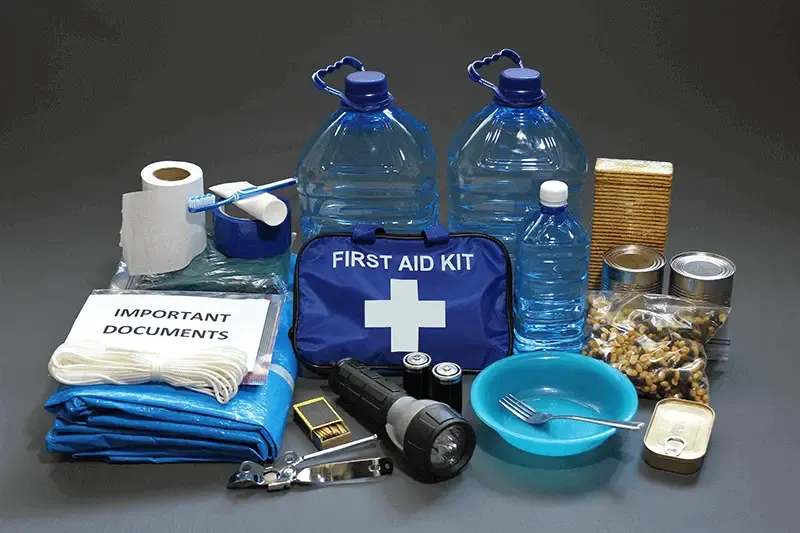
Make sure everything that's important to you is in a safe place and in a waterproof bag, for example, jewellery, documents, personal items, medicines and other valuables.
Move any household items you can to higher places. Put furniture and rugs up onto beds and tables – place electrical items on top of furniture and cupboards. Be careful if you're putting things up in your roof space or on an upper level, as these areas may not be able to safely support the extra weight.
Empty your fridge and freezer and leave the doors open to stop the appliances from floating.
Turn off the electricity, gas, and water.
If you have some, put sandbags in the toilet bowl and over all bathroom and laundry drain holes to stop sewage from flowing back inside.
As water supplies can be affected, it’s a good idea to store drinking water in containers and to fill bathtubs and sinks with water also.
If you are doing any renovating or building, make sure this work complies with the New Zealand building code which has standards in place to minimise storm damage.
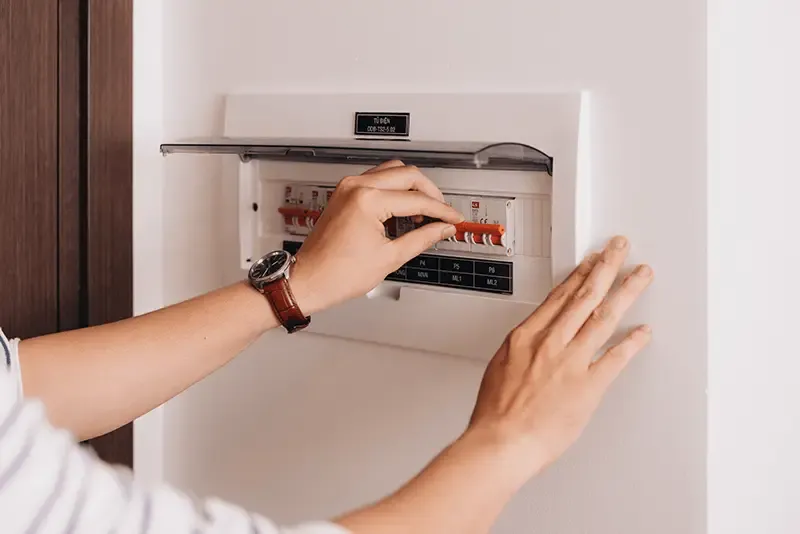
Roll out builder's plastic around the base of your home – leaving 40cm on the ground to put the sandbags on. Tape the remaining plastic to the outside walls to a height of 1.5m. Keep external downpipes on the outside of the plastic.
Check and seal all ventilation holes, under-house access ways and points where water can get in.
Open gates or fences to allow water to flow freely.
Don't drive into water if you don't know how deep it is or how fast it's flowing.
Move outdoor equipment, cardboard boxes, rubbish, chemicals, and poisons to somewhere up high.
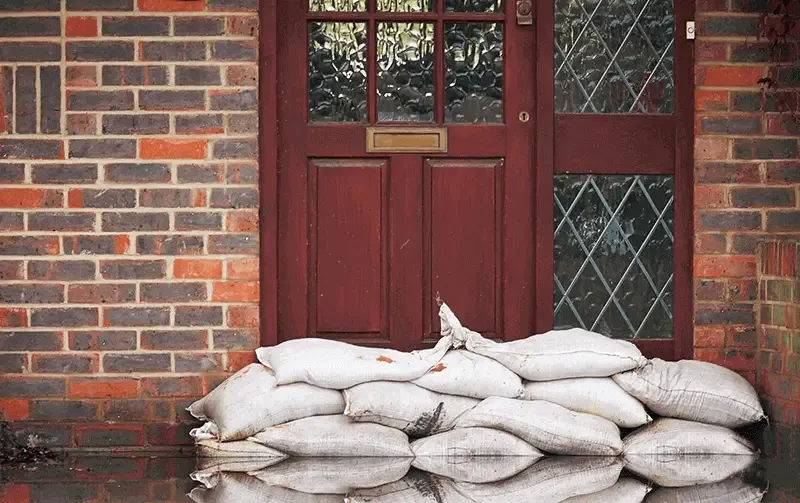
Remove loose objects that might get broken or cause damage if blown around.
Tie down, take inside, or fill with water large relatively light items like rubbish and recycling bins, to stop them being blown around.
Shelter and secure your pets.
Shelter vehicles or cover them with a tarpaulin or blankets.
Fill your sinks and bath with fresh drinking water.
Ensure you have a full tank of gas so that if you need (and are able) to, you can evacuate.
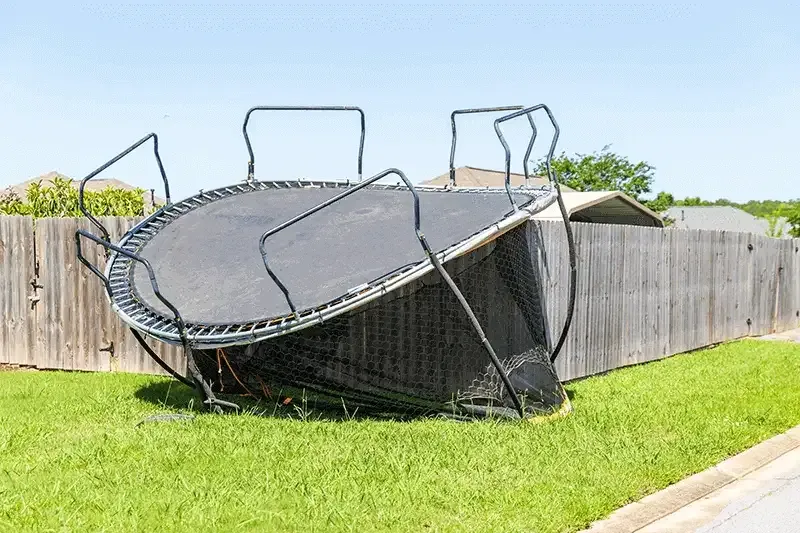
Check your home for damage to windows, walls and roof.
Make sure the electricity and gas are turned off before re-entering your home if returning to your property.
Use only a torch until you're sure there's no gas around if you need to use a light.
Throw out food that's been in contact with floodwater and boil water until supplies have been declared safe.
Check your smoke detectors are still working.
Don't use any electrical items and have the electricity and gas appliances professionally tested as soon as possible.
Photograph and list any perishable food items being disposed of.
Photograph then wrap safely and store any broken contents items.
Board up windows and doors immediately to prevent further damage.
Take a photograph of the damage to document the current state of your home and property.
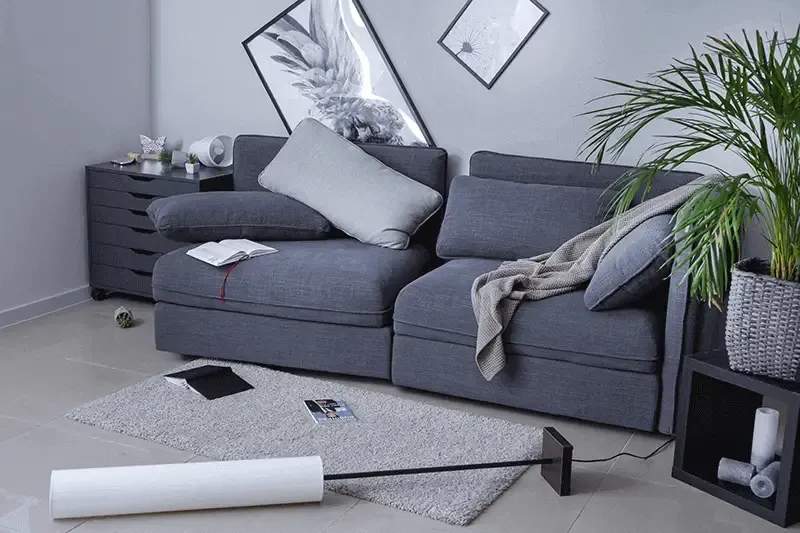
Tornadoes will sometimes occur during thunderstorms. A tornado is a narrow, violent rotation column of air that extends downwards to the ground from the base of a thunderstorm. The warning signs include a long, continuous roar or rumble, or a fast-approaching cloud of debris that will sometimes be shaped like a funnel.
Alert others if you can.
Take immediate shelter if you can. A basement is the safest option, but if underground shelter isn’t available, move to an inside room without windows on the lowest floor. You should get under sturdy furniture and cover yourself with a mattress or blanket.
If you’re outside when a tornado hits get away from trees if you can. Lie down in a nearby ditch or low spot and protect your head.
If you’re in a car when a tornado hits, get out immediately. Look for a safe place to shelter. Do not get under the vehicle for shelter. Do not try to outrun a tornado.
Wait for permission from emergency services to go back inside your house.
Keep all power and electrical appliances off until they have been checked and approved for use, and the house is cleaned up.
Boil tap water until supplies have been declared safe.
Clean everything that was affected as it may have been contaminated. Wear gloves and a mask during the clean-up.
Photograph and keep a record of all the damage caused. A photo gives a clear picture and will help when you make your insurance claim.
Your plans for evacuation should include all members of the family and this includes your animals.
Protecting your pets should be part of your emergency plan and should include a get-away kit with provisions for your pet and a full survival kit.
More information can be found on the SPCA website.
Natural disasters will sometimes happen with no warning so being well prepared is especially important to help keep you and your family safe, and to protect your belongings. There will be times when there will be warnings in place for natural disasters, and information broadcast on local radio stations with information and advice from by civil defence authorities about what you need to know for your community situation. You can also keep up to date with MetService Alerts.
If there is a serious threat to life, health or property, there is a system in place that sends emergency text alerts and messages to capable mobile phones from authorised emergency agencies. Sometimes these messages are also sent as a test to make sure the system is working.
A reminder that having insurance cover for your home, your biggest asset, as well as for your contents and car is particularly important if you suffer damage in a disaster. It will help you get back on your feet faster. Plus, having a private house insurance policy that includes fire cover (most do) means you automatically qualify for EQC's insurance product, EQCover. MAS will assess, manage and settle your entire claim on behalf of EQC, including the EQCover part.
Where your house is damaged by a covered event e.g. a natural disaster, MAS will pay the reasonable cost for a full repair. And if your property is a total loss, we'll pay the reasonable costs to rebuild your house in its entirety. Have a look at our Area Replacement Fact Sheet.
Once you have insurance in place, we recommend that you check your insurance regularly, including:
- What your insurance policy covers, as well as what it doesn't cover.
- If you have enough insurance cover to rebuild your home and replace your valuables after an emergency.
Find out more about House Insurance with MAS.
For more information on how to prepare for a natural disaster visit the Get Ready website – information on this site is now also available in Te Reo Maori, Sign Language and Samoan. You can select the language you want in the top right corner of the website.

15 September 2021
Emotional stress is felt throughout our body, it's not just limited to our over-worked mind. So what can you do to help someone who feels physical pain from an emotional event?
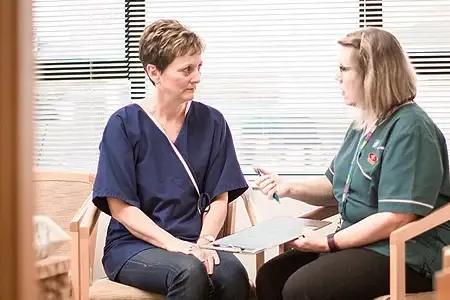
4 October 2023
In Aotearoa New Zealand, breast cancer affects 1 in 9 Kiwi women in their lifetime. It is easier to treat if it’s caught early, regular mammograms and self-checks are the best way to pick up on any changes.

20 October 2022
There are some situations where it’s mandatory to have different kinds of insurance cover, so you might be wondering if it’s compulsory to have contents insurance too. Find out here.